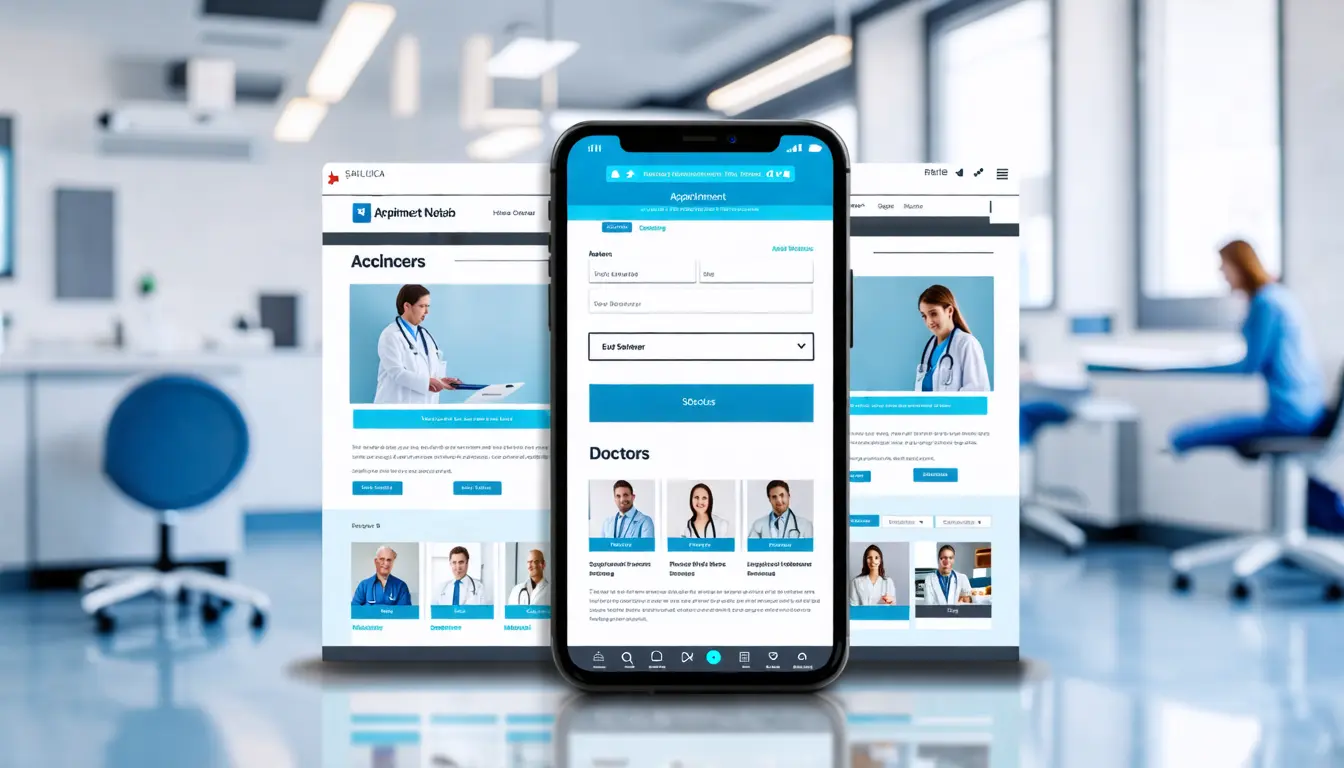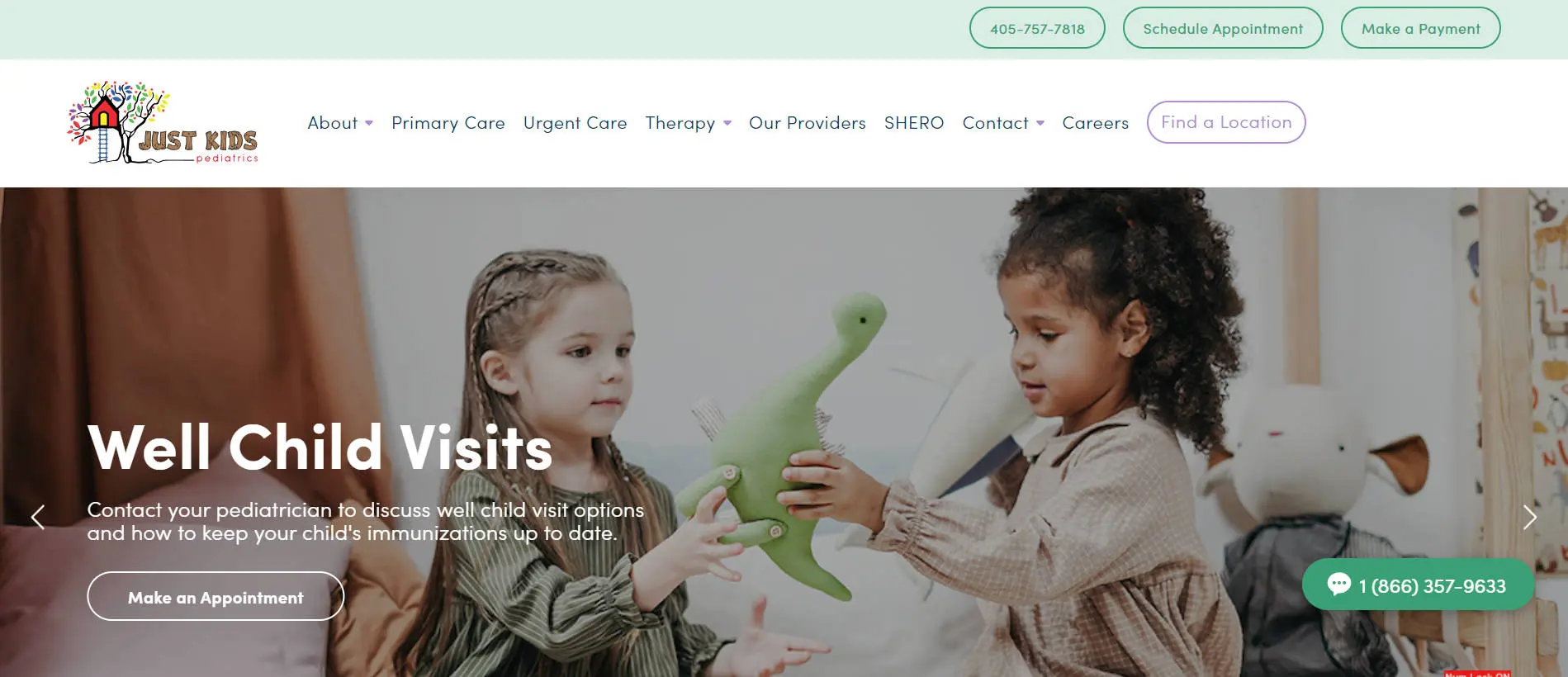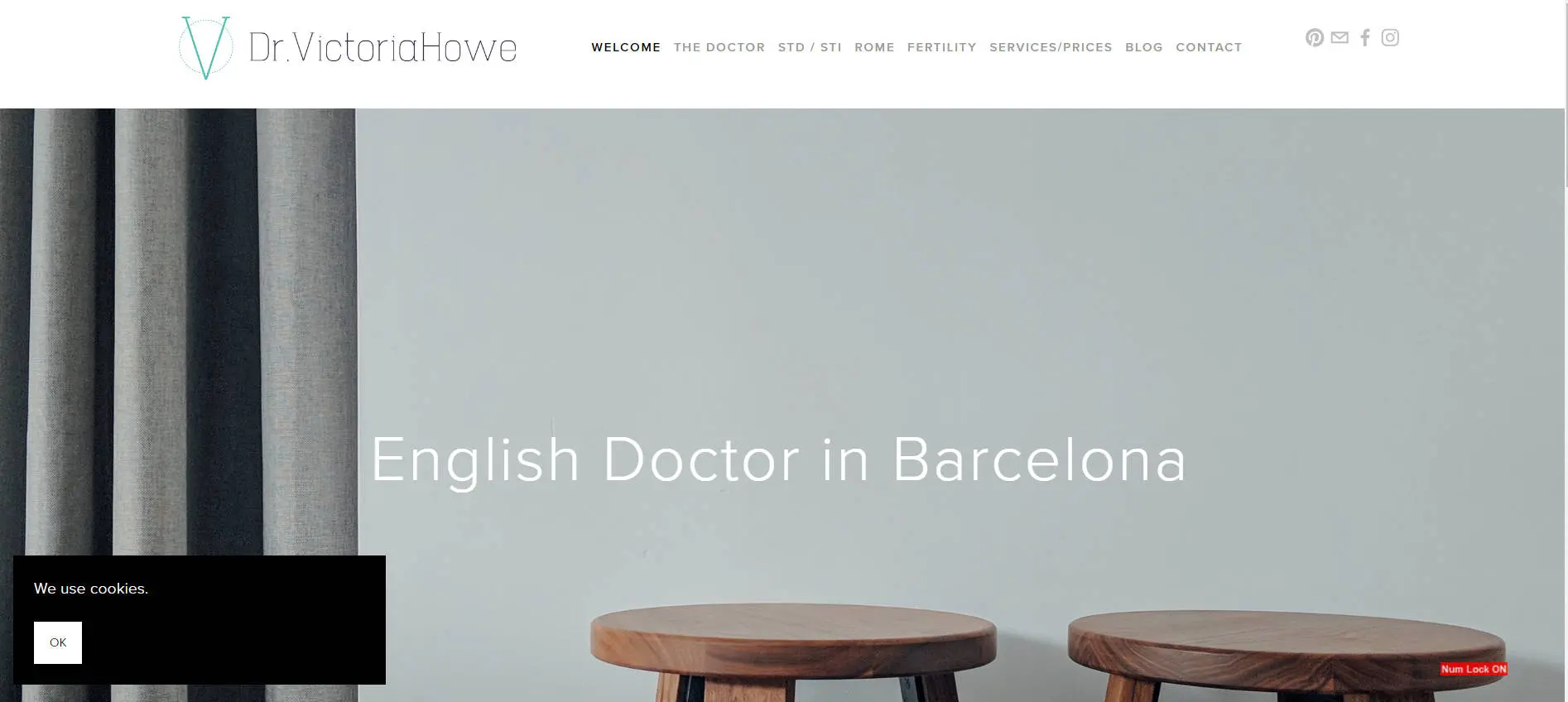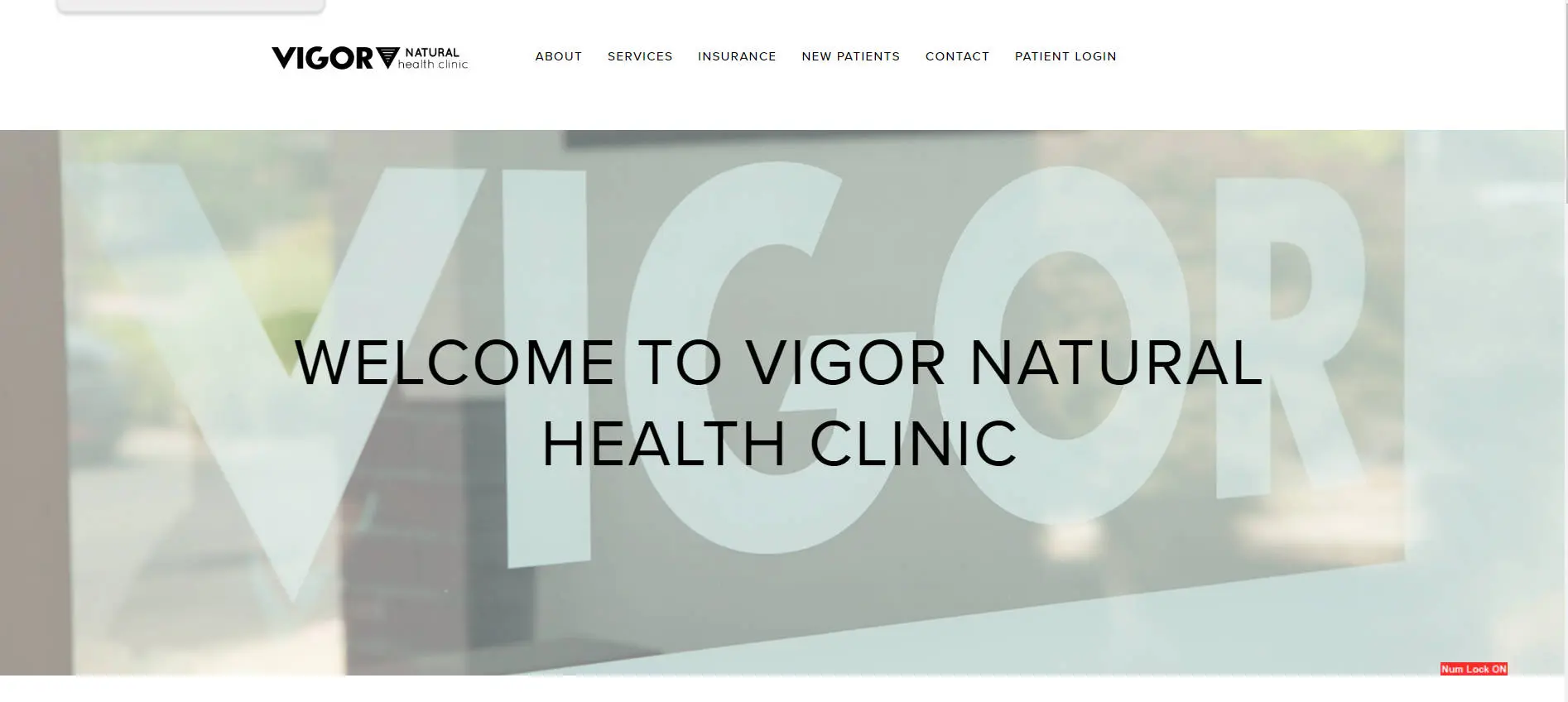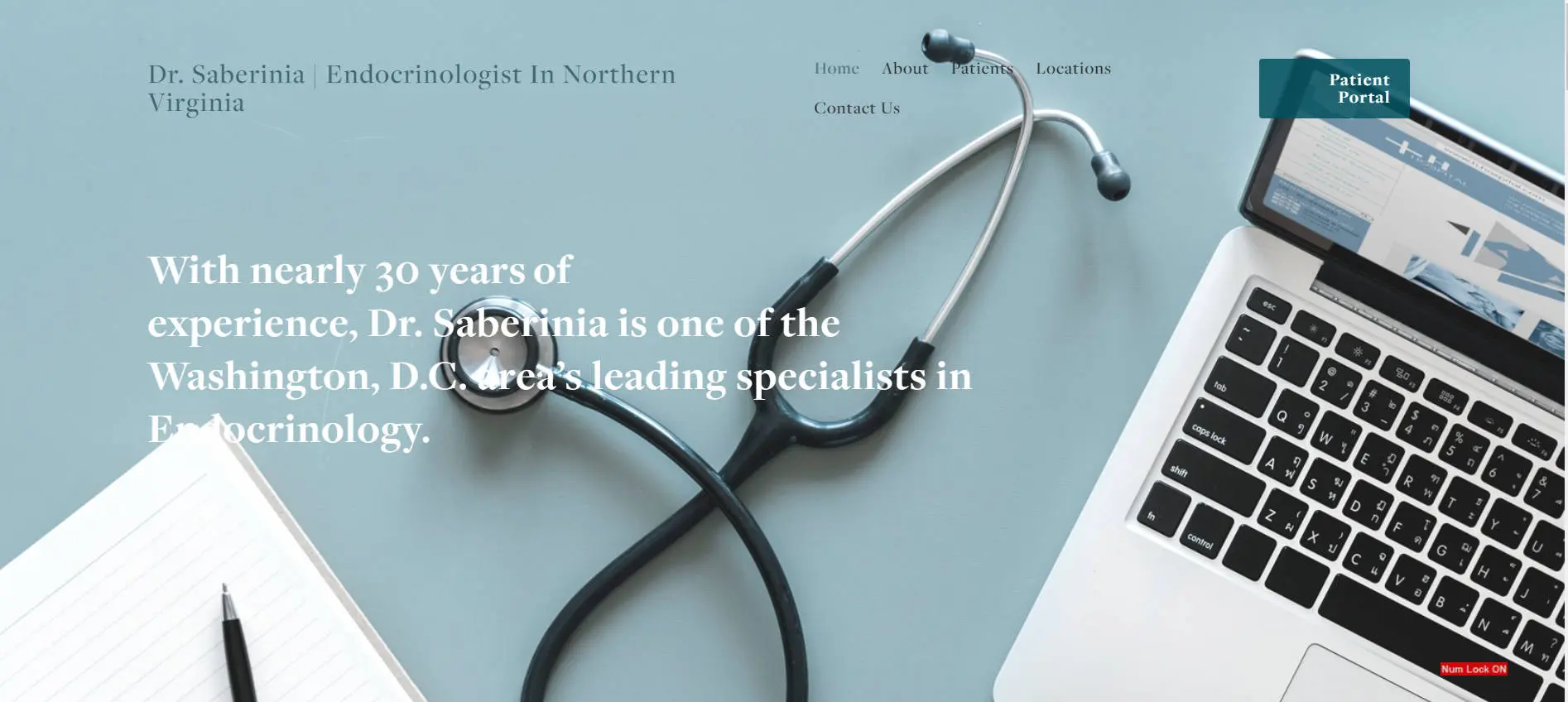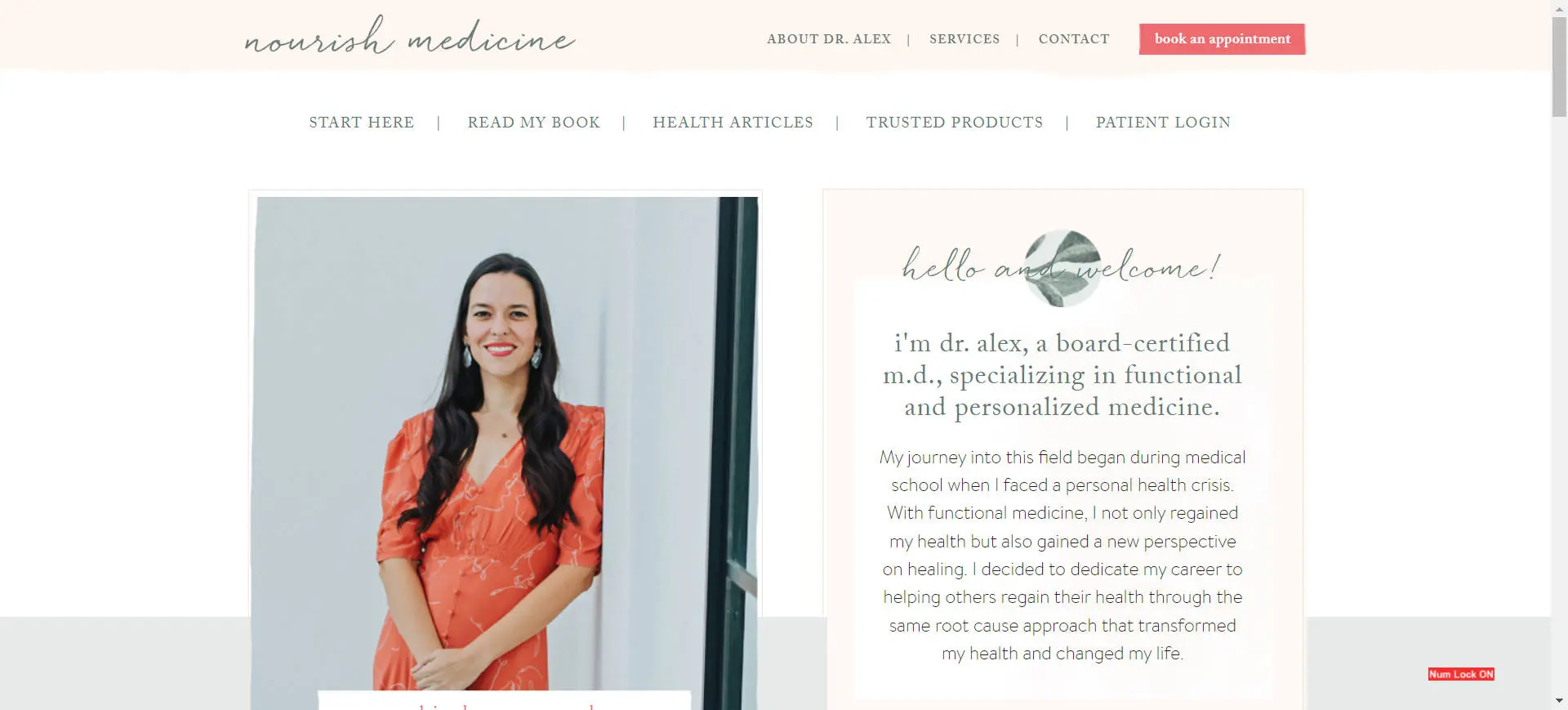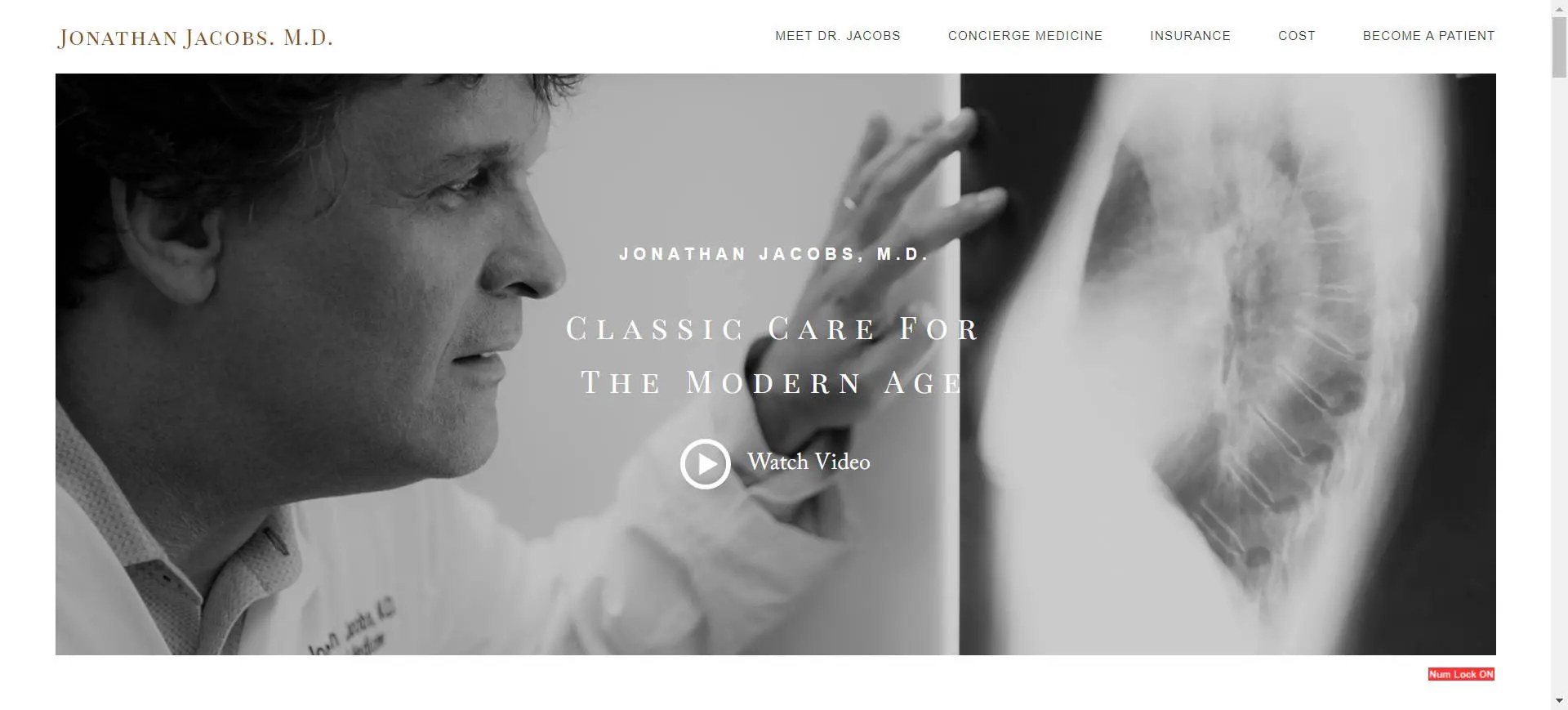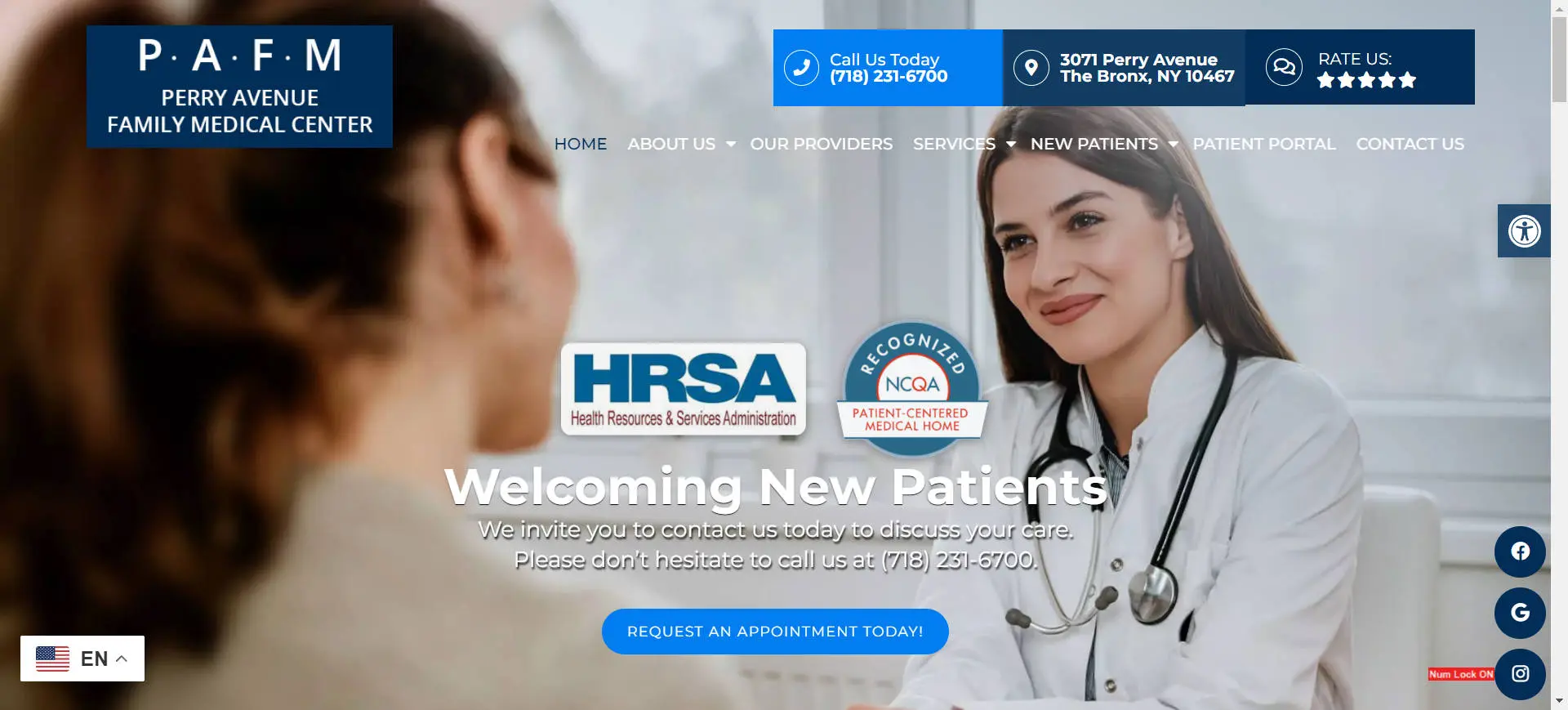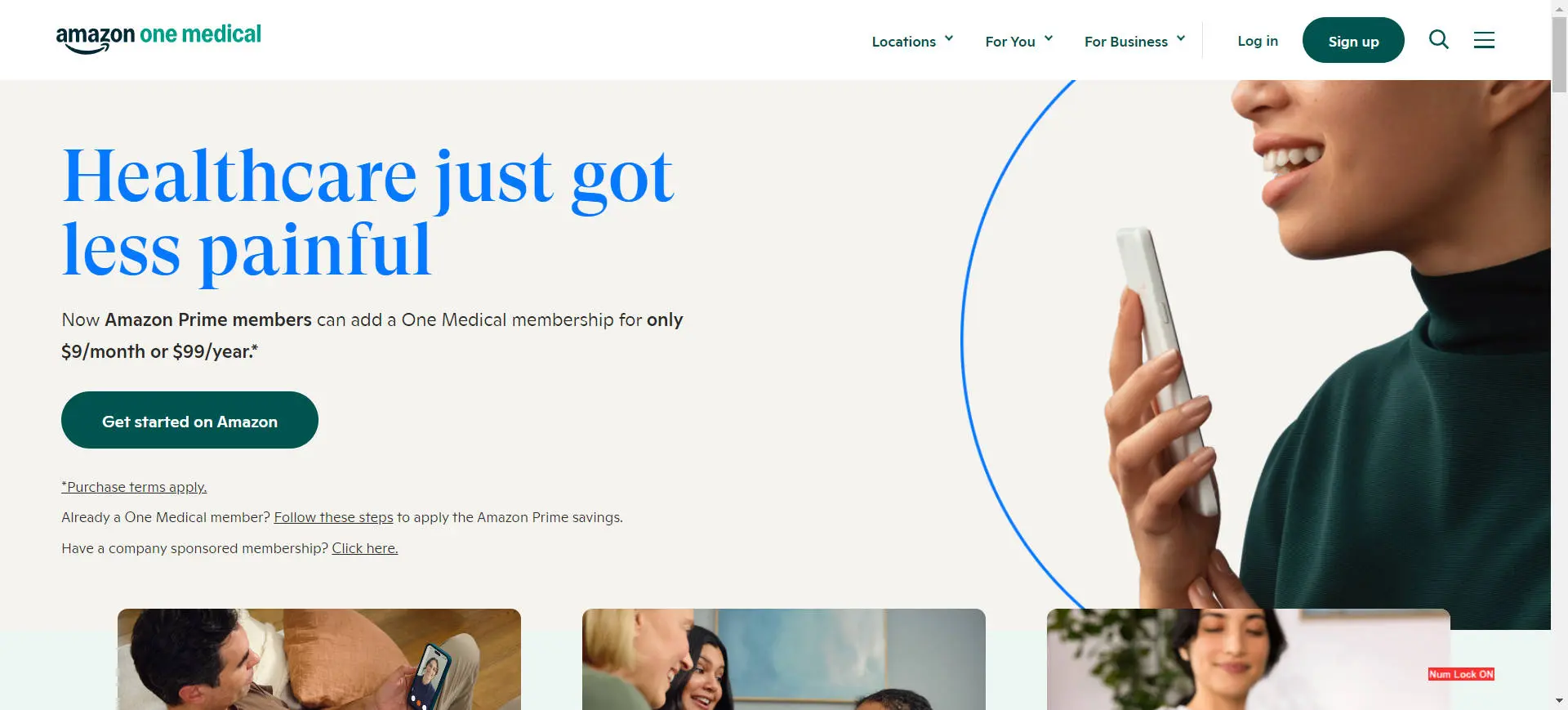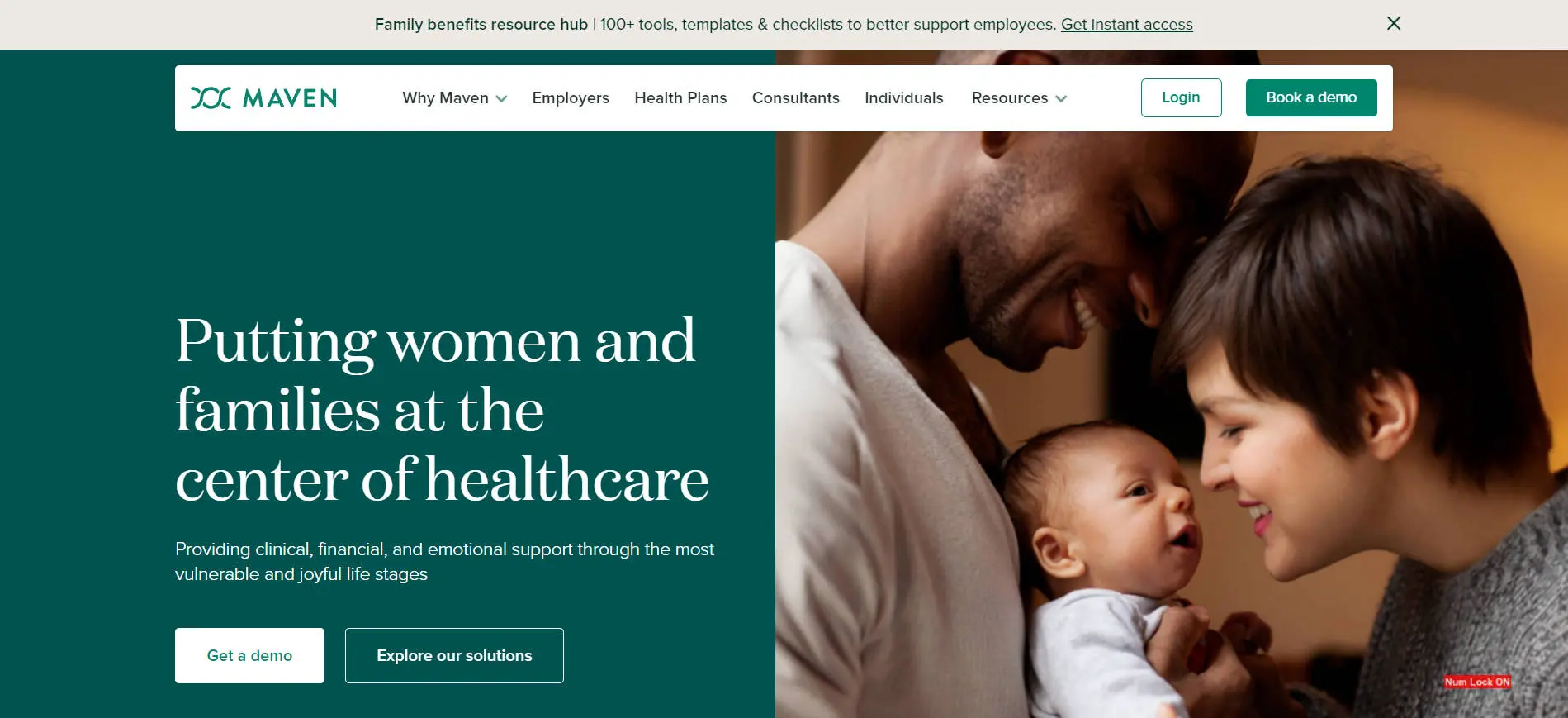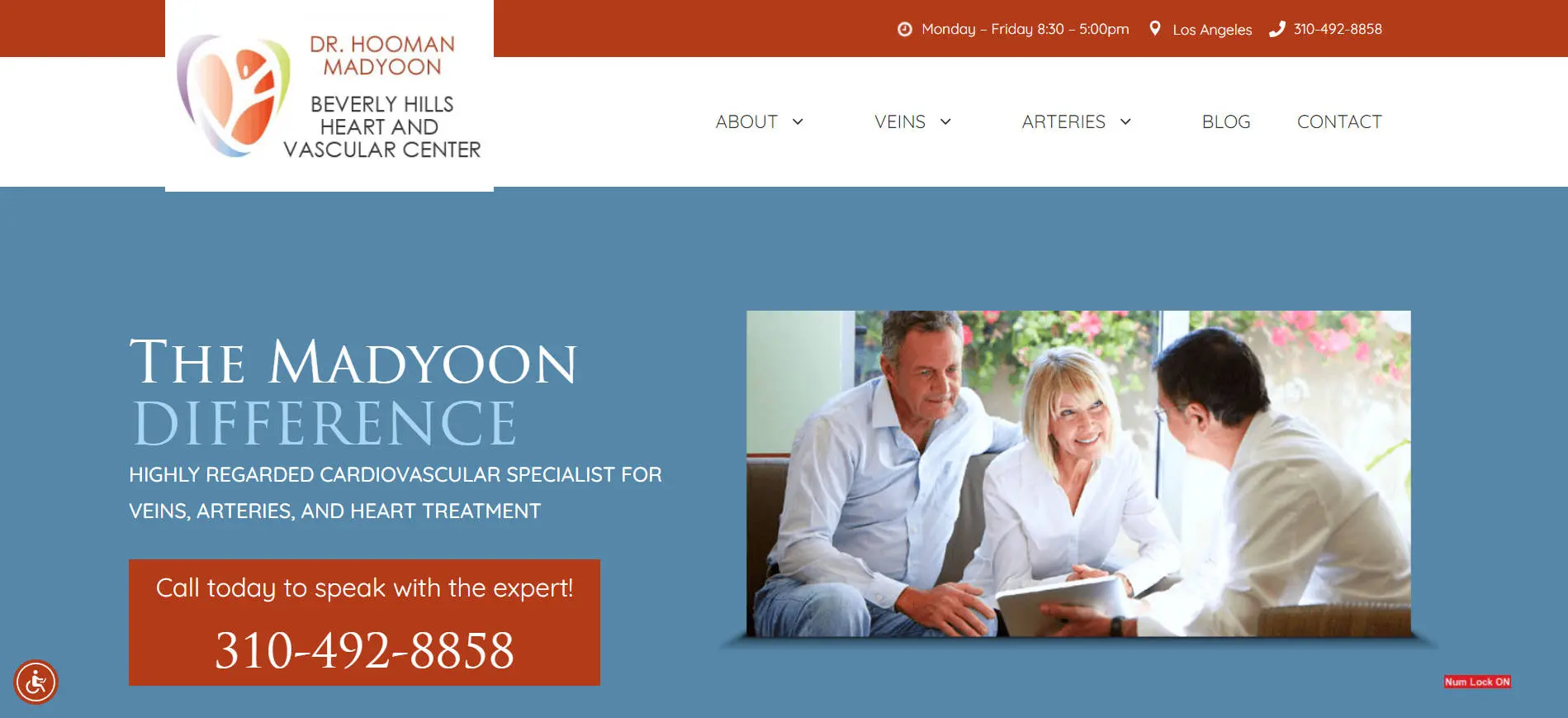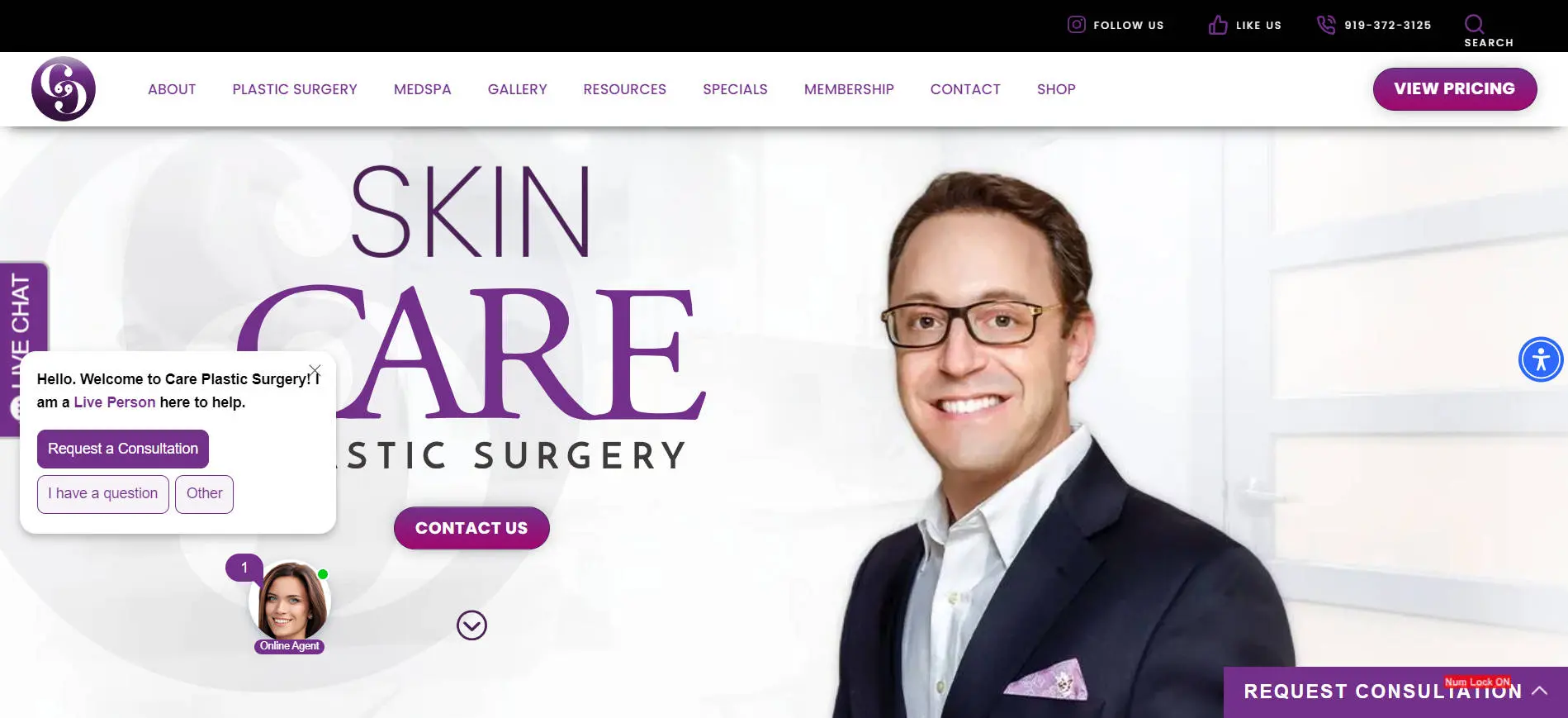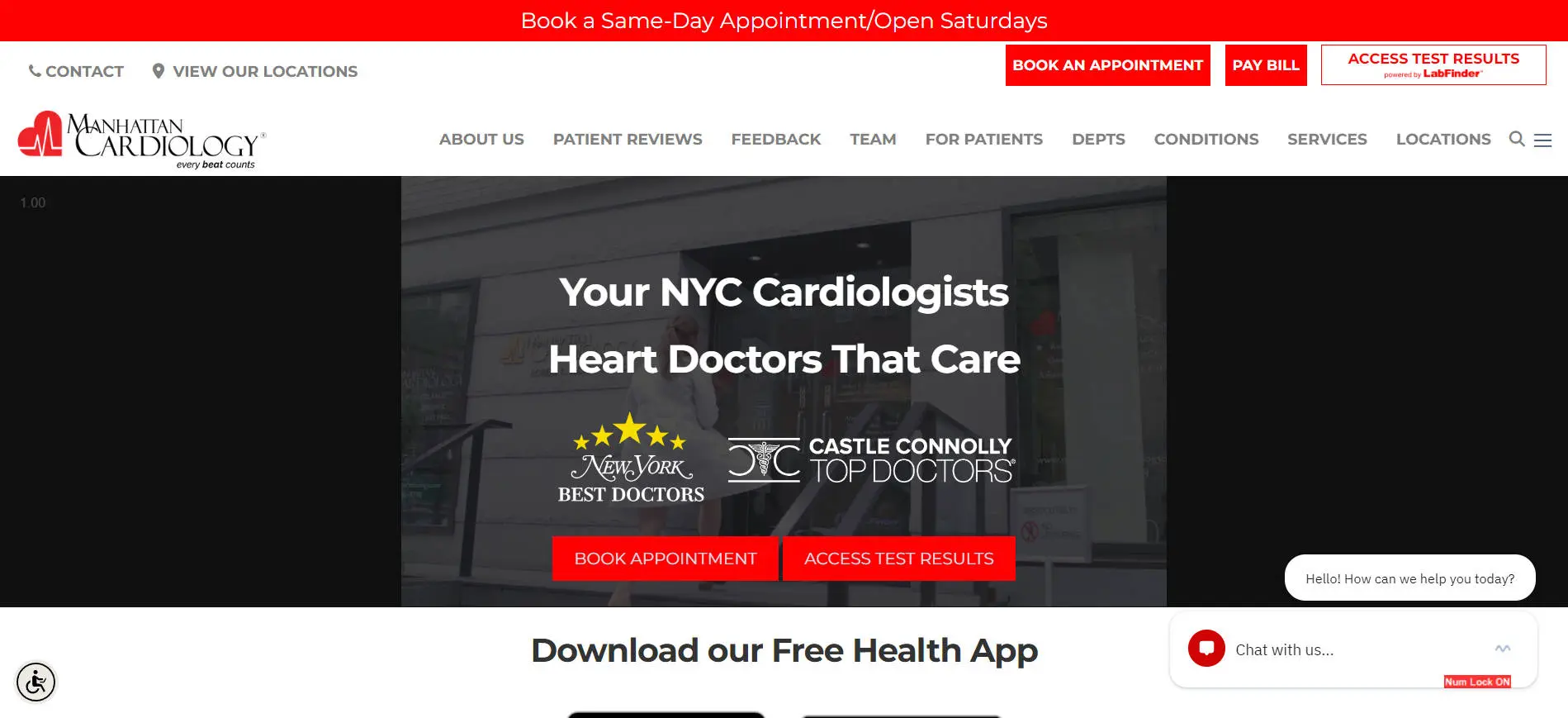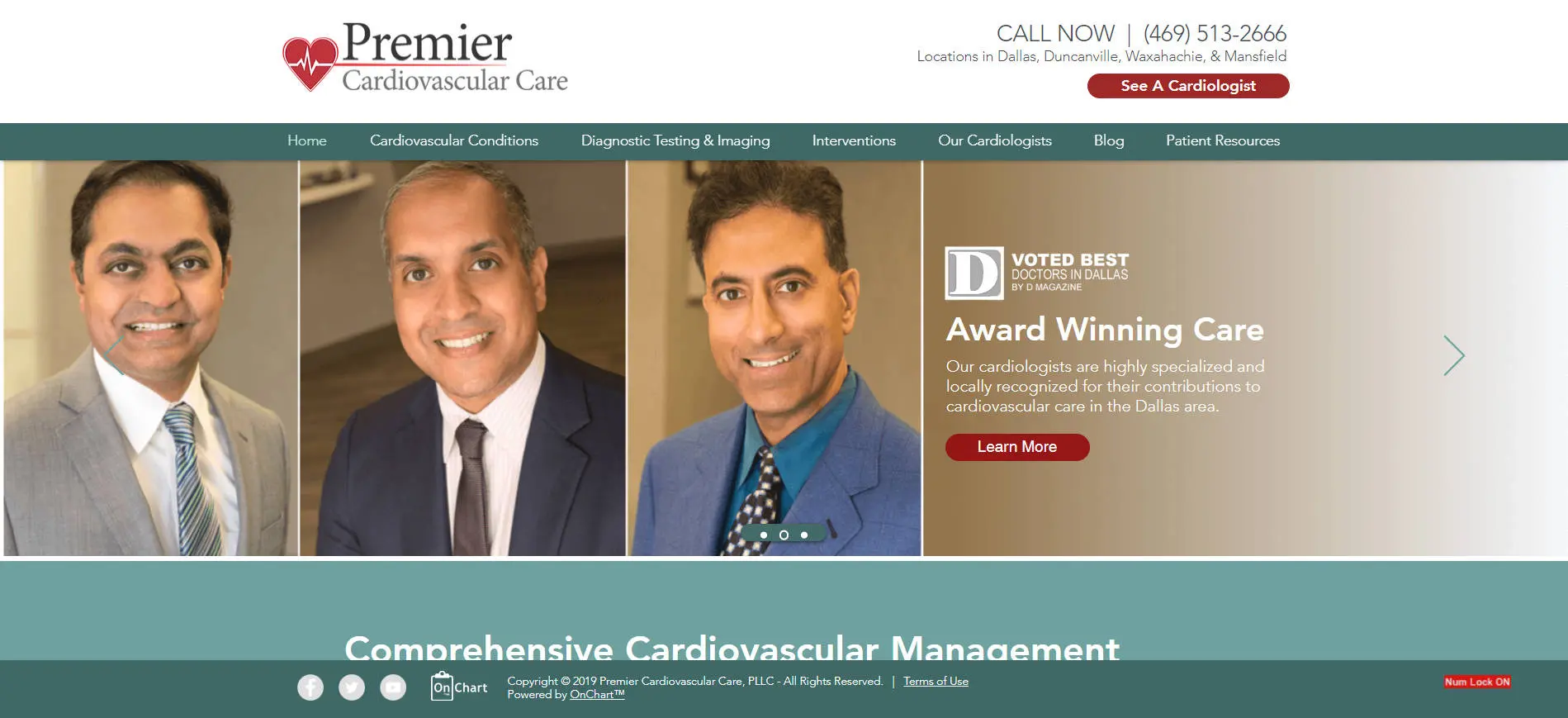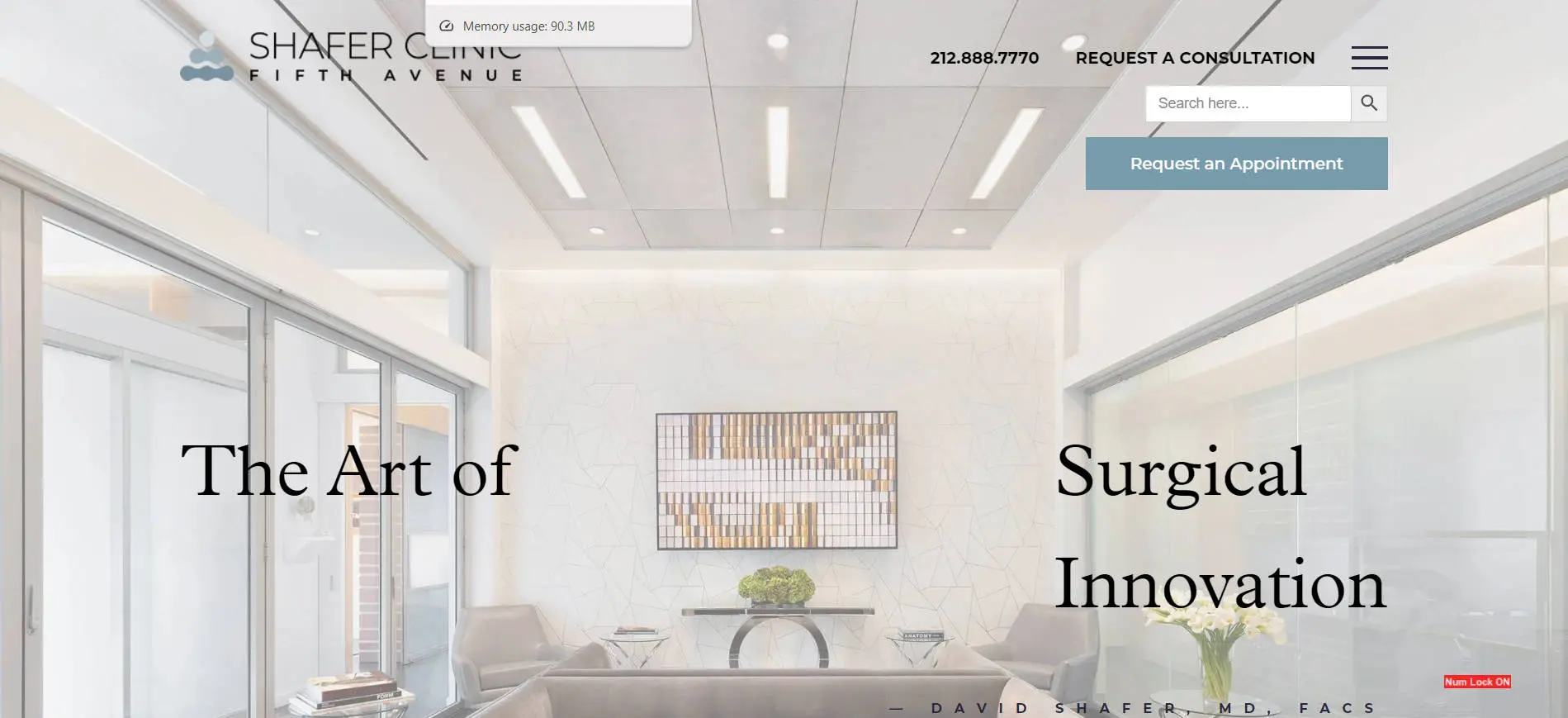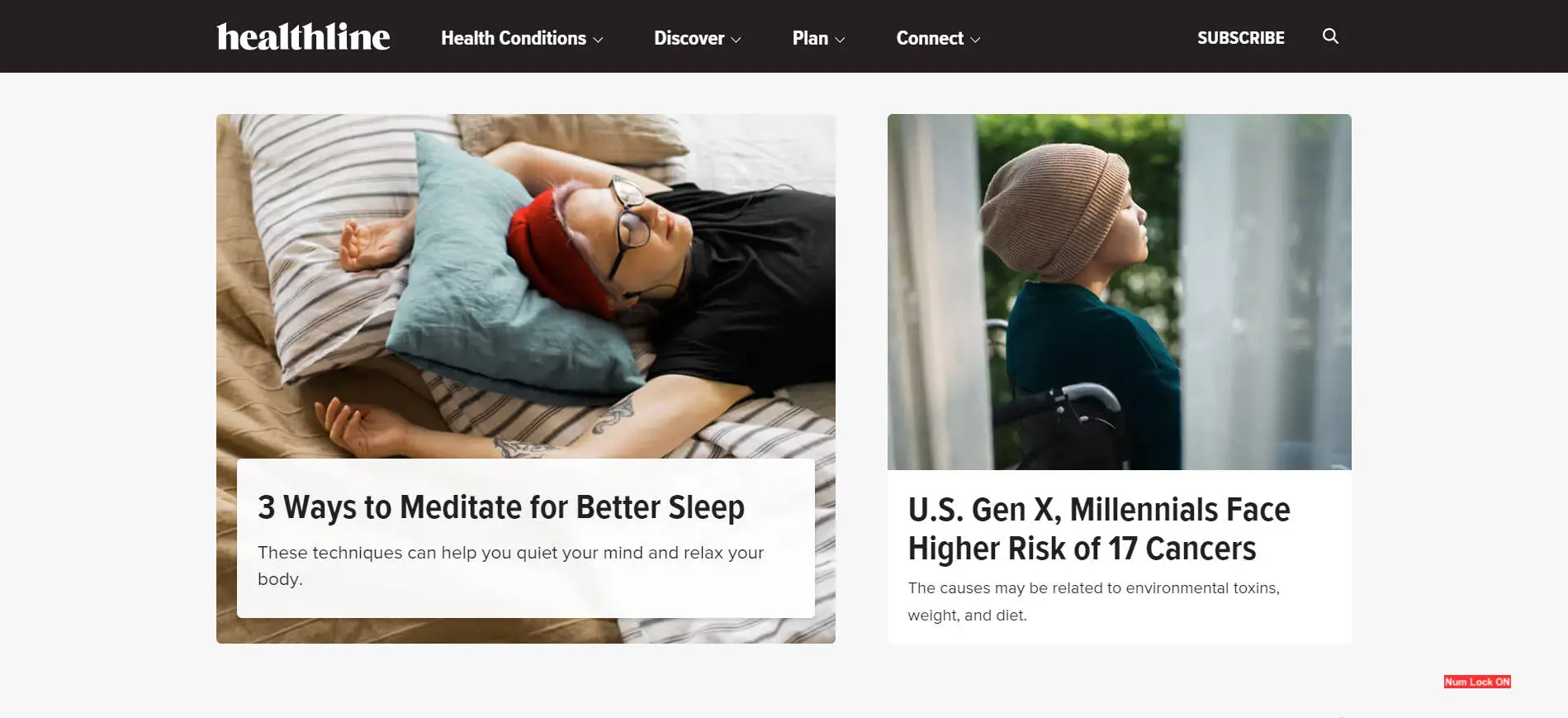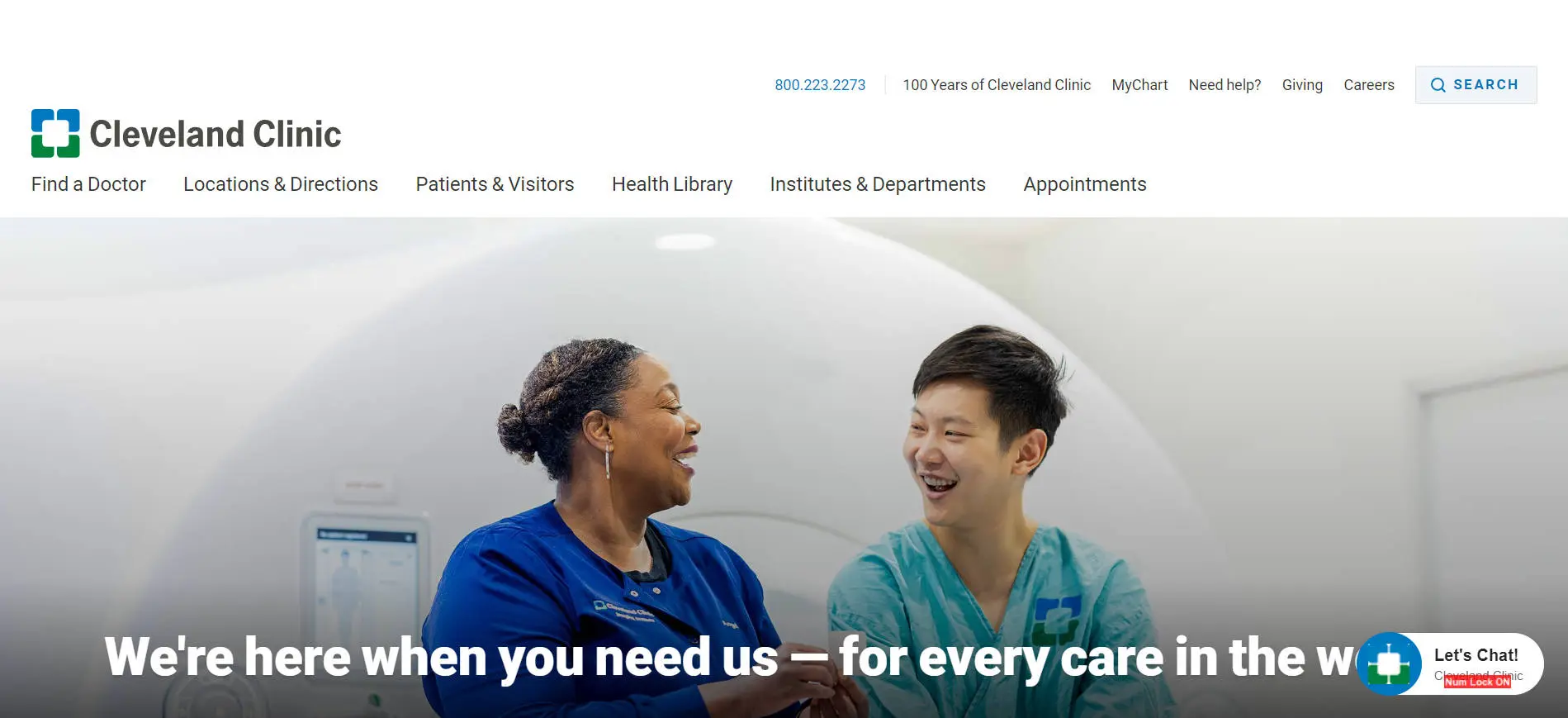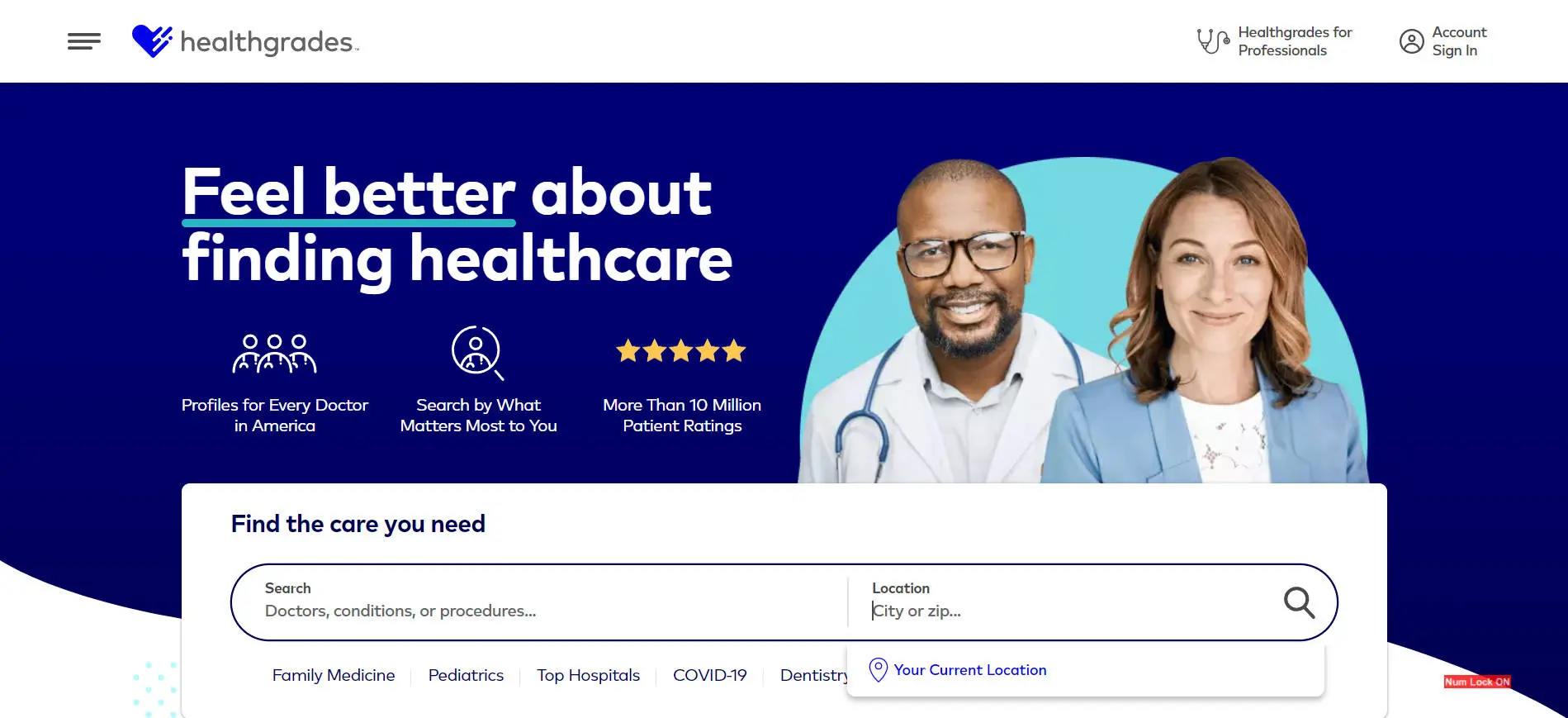On This Page
Wondering how to make your medical practice’s website more effective?
Web design for doctors focuses on creating user-friendly, informative, and accessible websites that attract and retain patients.
This article will discuss key elements like intuitive navigation, online appointment scheduling, SEO best practices, and mobile responsiveness to help your practice thrive online.
Key Takeaways
- A professional, user-friendly website is essential for medical practices to create positive first impressions and attract patients.
- Key features for medical websites include user-friendly design, online appointment scheduling, and patient testimonials, all aimed at improving patient experience and trust.
- Mobile responsiveness and effective SEO strategies, including local and content optimization, are crucial for increasing a doctor’s online visibility and attracting more patients.
Introduction
Visualize the initial interaction a patient has with your practice’s website.
Does it convey a welcoming, informative, and navigable atmosphere?
Your website often serves as the first point of contact with potential patients, and in the digital age, first impressions are everything.
They can either open the door to a new patient relationship or close it firmly shut.
A professional website design is not a luxury but a necessity, ensuring that your site stands out as high-quality, user-friendly, and comfortable for users to engage with.
Given the 6 billion individuals globally who rely on the internet for medical information before visiting a clinic, the significance of prioritizing your online presence is undeniable..
Officite, a leader in the field of medical web design, understands the gravity of this digital first impression.
By specializing in creating top-notch designs that reflect the unique brand and services of a medical practice, Officite helps physicians revolutionize their online presence, manage their reputation, and ultimately attract more patients.
Take, for instance, the Hawaii Gastroenterology Specialists’ website, designed with large texts, a clean layout, and accessibility features, keeping in mind the ease of use for elderly patients.
Such attention to detail in web design not only enhances user experience and accessibility but also sets the foundation for a successful online patient-doctor relationship.
Looking For Inspiration?
We’ve ranked a Top 40 according to visual appeal and functionality for user experience, as well as SEO in promoting visibility with search engines.
What do you think?
Understanding Doctor Website Design Needs
Doctor website design isn’t a one-size-fits-all solution.
Each medical practice website must be a unique digital embodiment of the practice itself, reflecting its values, specialties, and reputation.
But what makes a good doctor website not just good, but great?
It’s a fusion of aesthetics, functionality, and strategy, all aimed at achieving a singular goal: to connect with and serve patients effectively.
A high-quality website is the cornerstone of a medical practice’s online presence, acting as a virtual front desk that welcomes, informs, and assists patients every step of the way.
Web design elements significantly influence your medical website’s overall structure.
From responsive design ensuring accessibility across devices, to the strategic placement of content that drives website traffic, each aspect plays a pivotal role in drawing in more patients.
Let’s not forget that a new website is a fresh opportunity to make a lasting impression – a chance to showcase what makes your practice unique and why patients should choose you.
Officite stands at the forefront of this endeavor, offering personalized medical websites that are not only visually appealing but also optimized for search engines, thus enhancing the online reputation of healthcare professionals.
Essential Features of Medical Practice Websites
A medical practice website should offer more than just a visually appealing interface; it needs to be a powerhouse of functionality and patient-centric features.
Essential aspects such as user-friendly design, online appointment scheduling, and patient testimonials coalesce to form a website that is not only aesthetically pleasing but also highly efficient and trustworthy.
These features are the linchpins of a successful online medical practice, attracting more potential patients and providing current ones with the seamless service they expect.
User-Friendly Design
An effective medical website thrives on a user-friendly design, guiding visitors effortlessly from one page to the next.
Imagine a patient trying to find information on a site that is cluttered and confusing; it’s like navigating a maze with no exit in sight.
A professional designer knows that every page should lead the user towards a desired next step, with clear call-to-action buttons and consistent design elements that facilitate seamless navigation.
A website’s usability is key to building trust and rapport; for example, Greystone Chiropractic’s website’s easy navigation has proven to be a cornerstone of its success.
Moreover, the devil is in the details: basic information such as contact details and operating hours should be a click away, and listings of accepted insurances or dedicated sections for patient resources should be neatly organized and easy to find.
Barry Eppley, MD’s website exemplifies this principle with a high-contrast design and prominent call-to-action elements, ensuring an authoritative and intuitive user experience.
Online Appointment Scheduling
The option for patients to schedule appointments at their convenience revolutionizes the healthcare experience.
Online appointment scheduling is a testament to a medical practice’s commitment to patient engagement and the streamlining of administrative tasks.
With integrated online booking systems, a practice can provide an experience that respects the patient’s time and simplifies the path to healthcare services.
This level of convenience is not only appreciated by current patients, but can also be a deciding factor for potential patients choosing between medical providers.
Visualize a patient’s contentment when they can effortlessly book an appointment and instantly receive preparatory information for their visit.
This kind of efficiency not only enhances the patient’s experience but also reflects positively on the medical practice’s online reputation. It’s a clear signal that the practice values the patient’s time and is invested in providing a high level of care even before the patient steps through the door.
Patient Testimonials and Reviews
Nothing speaks louder than the voice of a satisfied patient.
Patient testimonials and reviews are the digital age’s word-of-mouth, providing honest feedback and personal experiences that resonate with potential clients.
These endorsements can be the perfect example of the quality of care provided by medical professionals, often tipping the scales in favor of a particular practice.
For potential patients, reading about the experiences of others can provide a sense of reassurance and establish an initial level of trust with the doctor or medical practice.
Featuring a patient testimonials section on your website essentially invites prospective patients to a dialogue with your most devoted clients.
It’s a space where patient engagement meets transparency, highlighting your commitment to care and the positive impact it has on the lives of those you serve.
A detailed FAQ section alongside these testimonials can further enhance transparency, allowing new patients to feel confident in their choice of healthcare provider.
Customizing Your Doctor Website
Now, it’s time to discuss how to infuse your unique identity into your medical website.
Customization is the brush with which you paint the unique portrait of your practice online.
It’s about more than just choosing a color scheme or a logo; it’s about crafting an experience that communicates your practice’s values and expertise to potential patients.
A well-customized website not only aligns with your medical practice’s unique brand but also includes interactive elements like staff bios and health blogs that invite patients to engage and explore.
Think of your website as a patient walking into your clinic.
It should feel welcoming, professional, and reflective of your practice’s ethos.
Here are some tips to achieve that:
- Use custom images of your team and facilities to make your site feel more personalized and approachable.
- Use bold, unique colors to make your site stand out.
- Add engaging features like a ‘Leave us a review’ button to encourage patients to engage and feel part of your practice’s community.
By following these tips, you can create a website that is inviting and reflects the values of your practice.
Mobile Responsiveness in Healthcare Web Design
Modern patient engagement is literally at your fingertips through mobile devices.
With the majority of web traffic now originating from smartphones and tablets, a mobile-responsive design is no longer an option – it’s a necessity.
What is responsive design?
Responsive design refers to websites or apps that can adjust their layout and content based on the size of the screen or device being used to access them.
Responsive design typically involves using flexible grids, images, and CSS media queries to adapt the layout and content to fit different screen sizes and resolutions.
This approach allows for a seamless and consistent user experience regardless of the device being used.
Healthcare professionals must recognize the importance of crafting medical websites that adapt seamlessly to various screen sizes, ensuring that patients have a positive experience regardless of the device they use.
This is not just about aesthetics; it’s about functionality and accessibility, about making sure that every patient can access medical services with ease.
Responsive design, utilizing flexible grids and layouts, is the technical foundation of mobile-friendly websites.
It’s the strategic application of CSS media queries and responsive coding that ensures a website looks and functions impeccably across all devices.
Not only does this provide a seamless user experience, but it also boosts visibility in search engine results, leading to more visitors and, consequently, more potential patients.
Search Engine Optimization (SEO) for Doctor Websites
While maneuvering through the complexities of search engine optimization may feel like solving a cryptic puzzle, its significance in the digital scenario is indisputable.
SEO is the beacon that guides potential patients to your website amidst the vast ocean of online medical information.
A well-optimized website enhances visibility in search engine results, ensuring that when patients search for medical services, your practice comes to the forefront.
With the right SEO strategies, a doctor’s website can achieve higher rankings, attract more website traffic, and ultimately schedule more online appointments.
Local SEO Strategies
For medical practices, the local community is the lifeblood that sustains them.
Hence, optimizing for local search terms becomes crucial in ensuring that your practice is the go-to choice for local patients.
Imagine a patient searching for “best doctors in [city]” and finding your practice at the top of the search results – it’s the kind of visibility that local SEO strategies can provide.
By maintaining consistent NAP information and optimizing your Google My Business listing, you create a strong local presence that search engines – and patients – will notice.
Local SEO is not just about online tactics; it’s also about engaging with the community.
Participating in local events and partnering with other local businesses can lead to valuable local backlinks, further enhancing your search visibility.
This approach underscores your practice’s commitment to the community while also leveraging local search engine results to attract more patients to your doorstep.
Content Optimization
Content is the canvas upon which your practice’s online presence is painted.
Optimizing this content with relevant keywords and engaging information is paramount to improving your website’s search engine ranking.
Service pages detailing the medical services you provide, along with blog posts addressing local health-related topics, can significantly boost your SEO efforts, driving relevant traffic to your site.
This isn’t just about peppering your pages with keywords; it’s about creating valuable content that resonates with your audience and positions you as an authority in your field.
The art of content optimization extends beyond just written text; it involves ensuring that all content, including images and videos, is properly tagged with descriptive, keyword-rich file names and alt text.
These behind-the-scenes details help search engines understand and index your content more effectively, leading to better search engine results and a stronger online presence.
Visual Elements That Enhance Medical Websites
Visual storytelling serves as a potent asset in the domain of medical website design.
High-quality images, engaging design elements, and professional themes can transform a medical website into a visual narrative that conveys professionalism and compassion.
Imagine a website that greets visitors with striking imagery and thoughtfully crafted healthcare themes – it’s an invitation to explore and engage with your practice on a deeper level.
From the color palette to the layout, every visual choice contributes to the overall feel of the website.
Muted colors and a clean interface, for example, can create a soothing atmosphere, while large, bold images can make a statement and leave a lasting impression.
It’s about finding the right balance that aligns with the goals of your medical practice and resonates with your patient demographic.
ADA Compliance in Medical Web Design
Inclusion extends beyond being a buzzword to become a fundamental feature of medical web design.
ADA compliance ensures that your website is accessible to everyone, including individuals with disabilities, providing them with the same opportunities to access and benefit from your medical services.
It’s not just about equality; it’s about avoiding the exclusion of a significant potential patient base and the legal ramifications that can arise from non-compliance.
An ADA-compliant website is a testament to a practice’s dedication to serving all patients, regardless of their abilities.
It involves a proactive approach, including conducting accessibility audits and using assistive technologies such as screen readers to ensure that the website is navigable and understandable for users with various impairments.
This level of attention to accessibility can significantly increase patient engagement and expand your practice’s reach.
Integrating Patient Management Systems
The cornerstone of a well-coordinated medical practice lies in its proficiency in managing patient information.
Integrating patient management systems with your website is like having a digital assistant that takes care of administrative tasks, allowing healthcare professionals to focus on what they do best—providing care.
From virtual consultations to secure patient portals, these systems facilitate a smooth transition throughout the patient’s healthcare journey, enhancing patient engagement and ultimately improving the quality of care.
Imagine a system that not only automates the mundane tasks of patient admissions and billing but also provides predictive reports to anticipate patient needs.
It’s the kind of technological integration that elevates a medical practice’s services, making patients feel understood and cared for even when they’re not physically present in the clinic.
This integration is a critical step in modernizing healthcare delivery and ensuring that your practice stays ahead of the curve.
The Role of Blogs in Medical Practice Websites
A blog can act as a lighthouse of knowledge, attracting the interest of those in search of health information.
It stands as a pillar of both education and authority within the medical field, offering insights into various health topics while simultaneously boosting your website’s SEO.
Regularly updating your blog not only increases the number of indexed pages on your site but also provides a golden opportunity for backlinks, both of which signal to search engines the relevance and authority of your practice.
Think of your blog as a bridge that connects your practice to the community, establishing you as the go-to source for health information and advice.
The right content marketing strategy can set you apart from competitors, offering custom content that is unique to your practice and valuable to your patients.
Additionally, repurposing this content on social media platforms can further enhance your online presence, drawing more eyes to your website and, ultimately, to your practice.
Measuring Success: Analytics and Feedback
In the digital sphere, success isn’t merely about drawing in visitors – it centers around engaging them.
Google Analytics serves as a compass, guiding your web strategy by tracking visitor numbers, engagement levels, and interactions with design elements.
With the advent of Google Analytics 4 (GA4), measuring success has become even more nuanced, utilizing an event-based model to gain a deeper understanding of user behavior on your website.
The power of analytics lies in its ability to transform raw data into actionable insights.
By customizing the Reports snapshot in GA4, you can keep a finger on the pulse of your website, monitoring the metrics that matter most to your practice.
Whether it’s through tracking the effectiveness of a new blog post or analyzing the user journey, analytics empower you to make data-driven decisions that can enhance patient engagement and improve overall website performance.
Frequently Asked Questions
Why is mobile responsiveness important for a medical website?
Mobile responsiveness is important for a medical website because a significant amount of web traffic comes from mobile devices, and a mobile-friendly site ensures easy access to medical services for patients using any device, ultimately enhancing patient engagement and search engine rankings.
How does SEO benefit a doctor’s website?
SEO benefits a doctor’s website by improving its visibility in search engine results, making it easier for potential patients to find the practice when searching for healthcare services.
This can lead to more website traffic and potentially more appointments scheduled online.
What visual elements are important for a medical website?
Visual elements such as high-quality images, professional themes, and engaging design elements like color schemes and layouts are important for a medical website as they convey professionalism and compassion, encouraging deeper engagement with the practice.
How can I ensure my website is ADA compliant?
To ensure your website is ADA compliant, conduct accessibility audits, use assistive technologies for testing, and include features like closed captions for video content.
This will make your website accessible to individuals with impairments and help avoid legal issues.
What role do patient testimonials play on a medical website?
Patient testimonials on a medical website build trust and credibility by offering honest feedback from previous patients, influencing new patients’ decisions by highlighting the positive impact of the medical services.

